With Faircloth & Supply, Every Piece Makes a Difference
Each item sold from Phoebe Dahl’s linen-focused womenswear line supports a girl’s education in Nepal

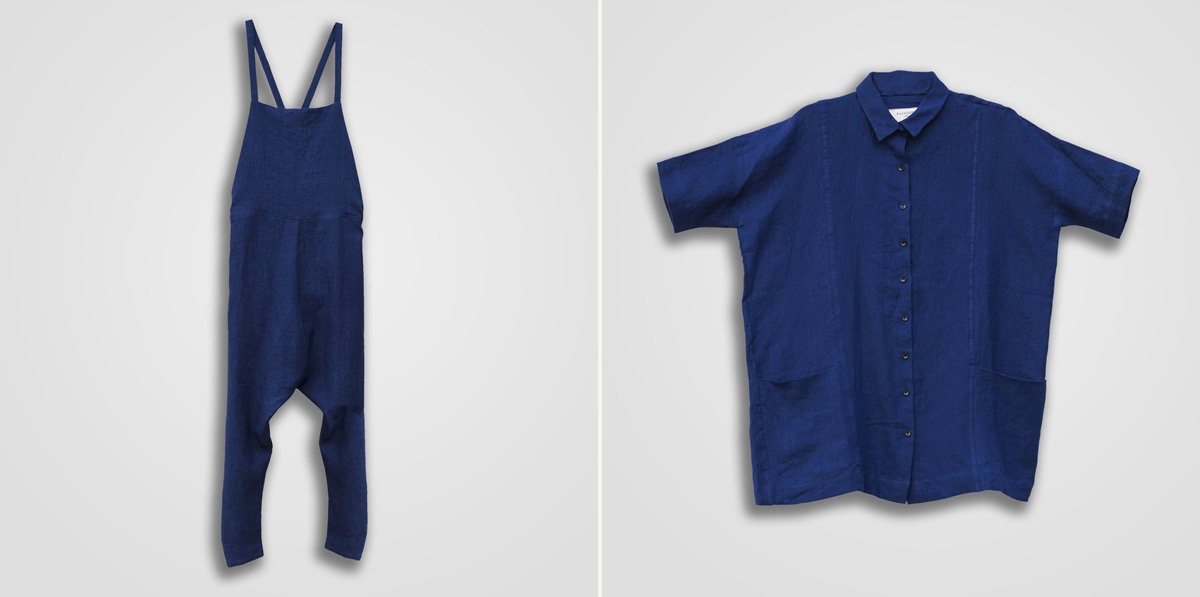
British writer Roald Dahl touched the hearts of children around the world with his imaginative tales of gigantic peaches and golden tickets. His granddaughter Phoebe Dahl extends his legacy in her own way: by helping girls in Nepal to grab ahold of the opportunity (and their right) to become whatever they dream. Every piece sold from her LA-based line Faircloth & Supply results in a school uniform, school supplies and a scholarship for a girl to attend school for a year. This is the stepping stone to eroding the gender inequalities engrained in Nepalese culture but undoubtedly leads to a better quality of life for girls as they are less vulnerable to human trafficking and economic exploitation.
Faircloth’s newest collection, which launches today, features button-down shirts, bomber jackets, overalls and more in linen. The practical styles are boyish yet polished, and it’s the material’s crisp texture that will draw double takes on the street. This linen is sourced through a local fabric supplier who imports from Italy, and keeping things consistently ethical, the pieces are all made in downtown LA; Dahl works with a small family-run production company who she’s been with since the beginning.
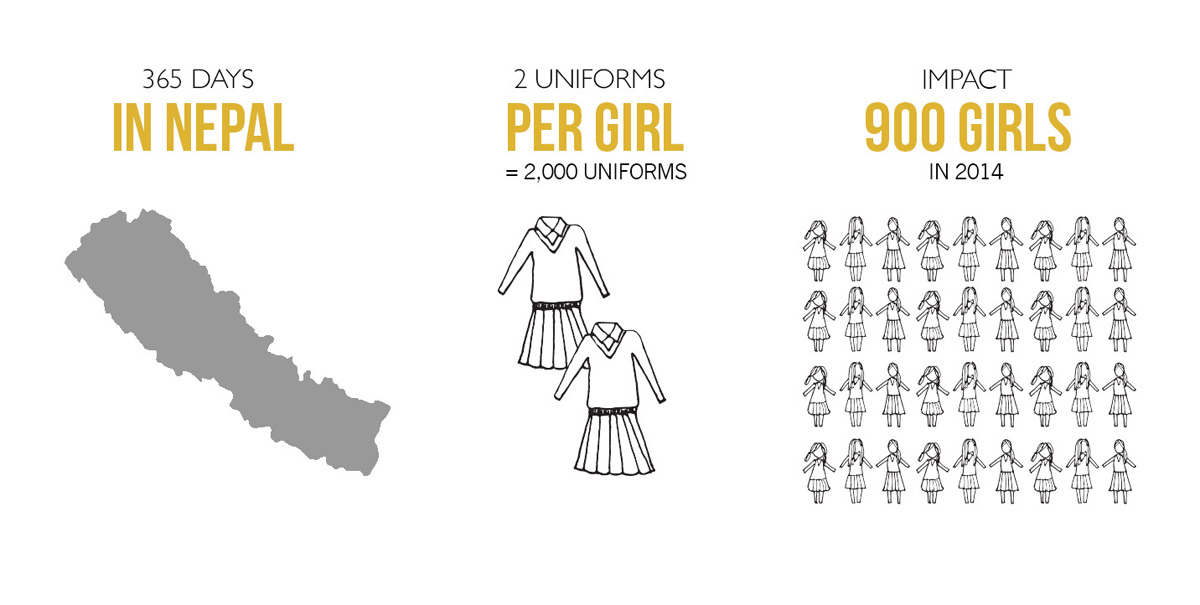
Thus far, their efforts have sent around 900 girls to school—but they also leave an impactful message with customers: women have the power to think before they buy, and they can also make a difference “from this day forward.” We chatted with Dahl to learn more about her specific mission.
How were you first introduced to GWP, who you’ve partnered with to support these girls?
It started with the cause: girls education. I was insistent in finding an organization that focused on girls education and human trafficking. I also wanted to work with a grassroots organization so I could be more hands-on and create the opportunity for us to grow together. I asked everyone I knew and was eventually connected to Mahesh (founder of GWP) through Go Campaign and happened to be in Nepal. I pitched him my idea about giving a school uniform for every dress I sold and he loved it! It has now evolved into a school uniform, school supplies and a scholarship for one dress. Nepal is such an interesting country. Most foreigners think it’s beautiful and mountainous and some sort of utopia, but it borders India, has a lot of the same social issues as India, and does not get a lot of help. In fact, as a result of being so close to India, traffickers will cross the border from India into Nepal in search of girls to bring back.
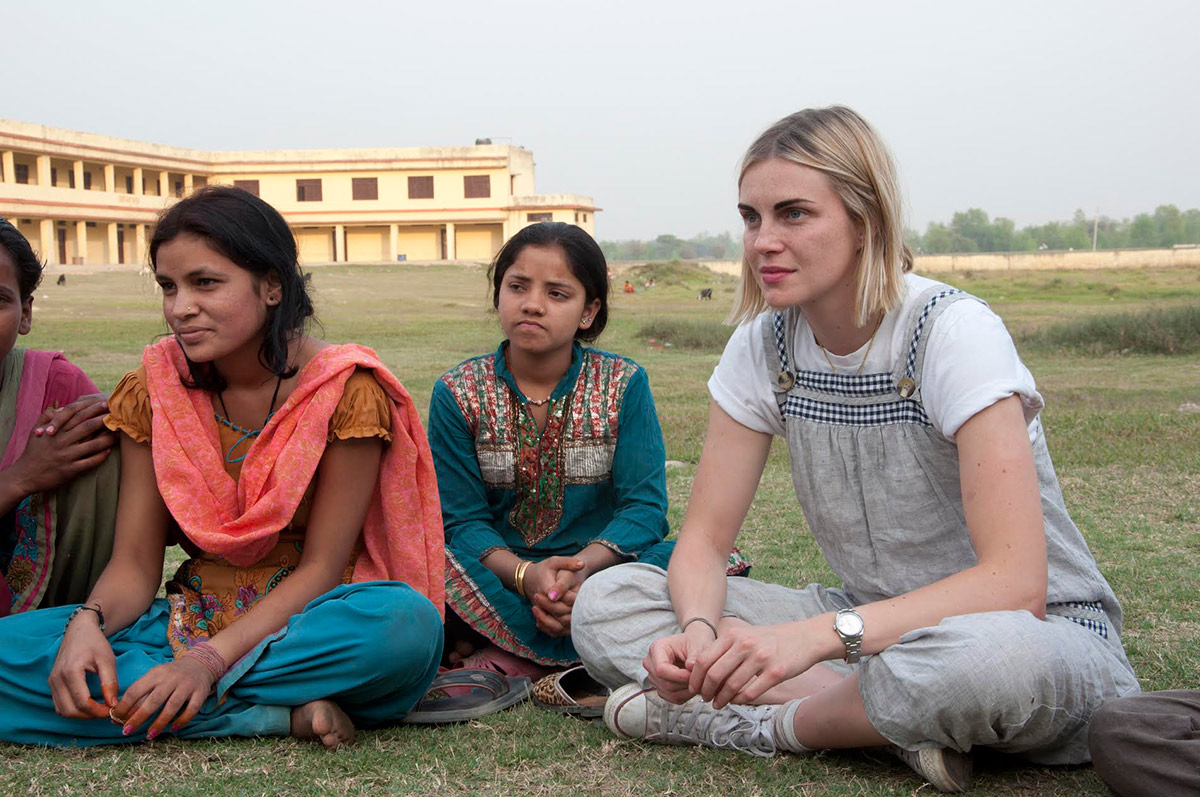
You visit Nepal a couple times a year; have you been able to observe progress unfolding before your own eyes?
The first school we visited [in Hetauda, last year in March], myself, Mahesh and 15 girls sat cross-legged in the school yard and the girls spoke of their experiences: what it means to them to have a uniform and the confidence and security it provides them within their community. Sex trafficking is one of the bigger issues that girls face in Nepal and when asked if girls in uniform were ever approached by traffickers, they explained how the uniform protects them from traffickers, that traffickers tend to not target girls in uniforms as they know that these girls possess a strong will and confidence, largely due to their education. One of the older girls explained that the at-risk community for sex trafficking is primarily made up of young, poor and uneducated girls, who are not in school because they can not afford a uniform (a requirement in order to attend school in Nepal).
We continued to visit five other schools, some much poorer than others, but all rich in stories of hardship and suffering. Our final school visit was located an hour and half away, on the border between India and Nepal, a primarily Muslim community. When we arrived, school was out of session and we sat for a moment in the school yard, waiting for the girls group to arrive. We watched women and very young girls picking grass for the cows while boys played stick ball and men relaxed under a large tree. A scene that I found beautiful at first quickly changed. It dawned on me that I was seeing first-hand the extreme contrast in gender roles in this country. This had been explained to me by the girls I met throughout the day, that they were involved in school to avoid these roles but I had not yet seen this in practice. Shortly after, 16 girls joined us as we sat in our last circle. Again, they explained what GWP meant to them and had done for them.
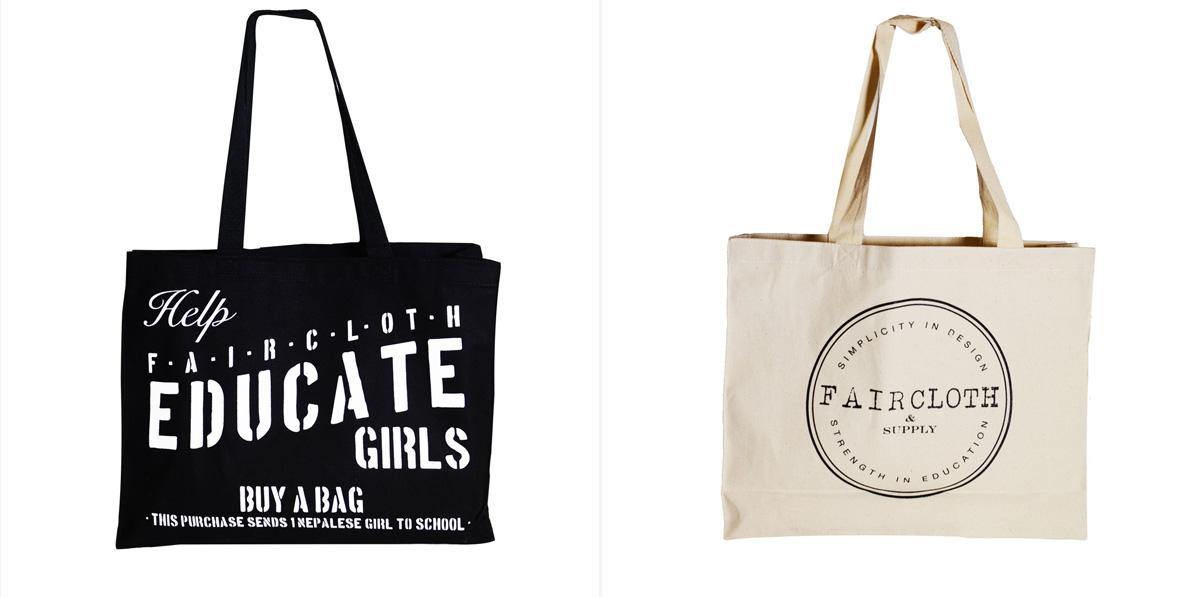
Both Mahesh and the girls we had spoken with continually referenced that the goal of having an educated female community is to break the cycle of young women not going to school, [who grow] to be mothers and not send their daughters to school and so on.
Halfway through our meeting, two older women joined our circle. They were the mothers of two young women we had been speaking with and they not only praised their daughters, but also expressed their interest in joining a group similar to what their daughters were part of. It was in this powerful scene and in this one yard that we saw the two communities of women. Both mothers and daughters who had not gone to school, working in the field, women who had not yet broken the cycle, 50 feet away from girls who were beginning to break that cycle—sitting with us in uniform, talking about their exams and their dreams for their futures, alongside their supportive mothers, whom were only able to speak of how proud they were of their daughters. The mothers continued tell me about how they never thought their daughters, or girls in general would have the safety and support that their daughters have found in GWP.
[One] girl proceeded to say, “We know what life is like here in Nepal and that gender inequality will never change; it is our culture, but we do know that we have a right to an education and that we can start making small, positive changes for women that will have a broad impact.”
I don’t want to and can’t change the world—or Nepal for that matter—but I do want to bring these girls to their dreams of becoming whatever it is they want to be.
I don’t want to and can’t change the world or Nepal for that matter, but I do want to bring these girls to their dreams of becoming whatever it is they want to be, give them safety in their communities, potentially helping them to no longer live in fear. This all starts with an education and more specifically a uniform—this is where I come in. One uniform can be seen as a building block in giving back the Nepali women’s understanding of their basic human right to an education—a knowledge that has been all but stripped of them in the past.
The girls groups give young girls the power and support to stand up for themselves, a power found in numbers which creates a unity that no man can infiltrate. The girls that are in school are girls that are strong-willed and as I mentioned earlier—confident, not because their parents teach them to believe in themselves, but because they want to be there and make a difference for their generation and gender. It’s their own personal journey, unfortunately more commonly brought on by struggle, that has gotten them to a point of wanting to make a difference for themselves and generations to come. Their success rubs off on their peers and thus, the trickle effect begins.
Again, I can’t undo or try to change Nepal’s history of 300 years of trafficking, but I can make a change and a difference from this day forward.

Many of Faircloth & Supply’s pieces are linen, what do you love about linen as a material?
I love everything about linen! It’s an incredible fabric that keeps you warm when it’s cold and cool when it’s warm. It dries faster than any other fabric, gets softer with each wash and wear, and is quite durable—it lasts a long time and wears beautifully. When I purchase a linen piece, I know it’ll last forever which is such a cool thing, especially these days with so much disposable fashion.
Linen has a stigma attached to it—when you think of linen clothing, usually one image pops into mind, which is very earthy granola clothing (which I do love, shh!) but I’m trying to change people’s perception of linen and natural fibers. I want to change the status quo and show people that linens can actually be young, cool and stylish. I also feel more of an emphasis is being placed on comfort at the moment, and with linen being incredibly comfortable as well as undeniably chic, I feel it’s the perfect choice!
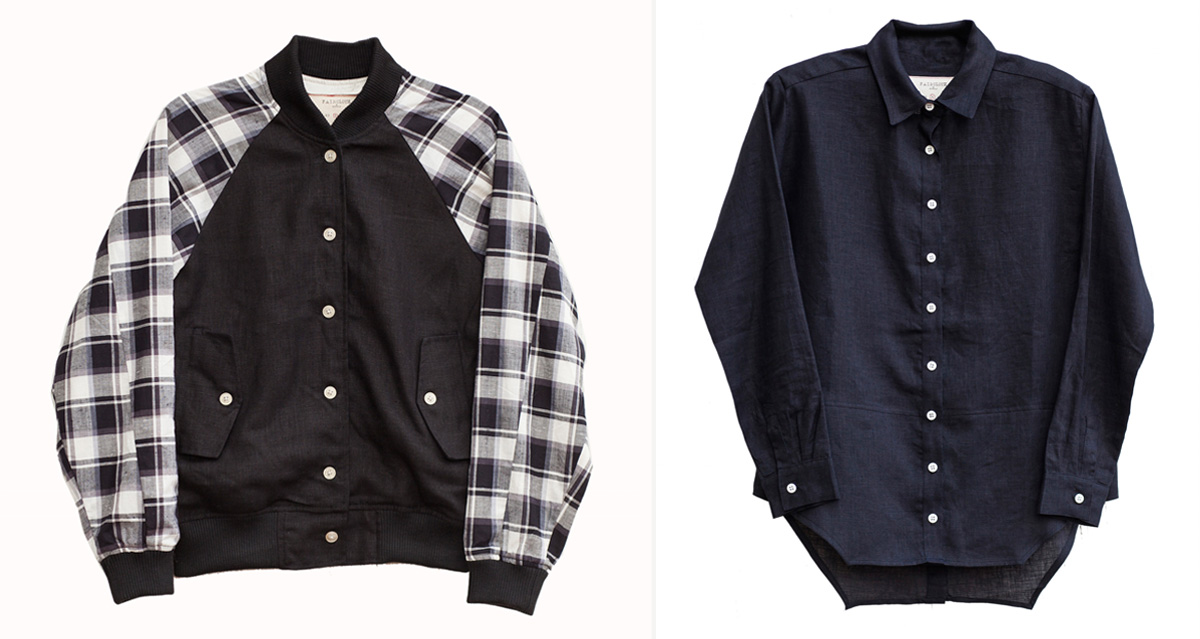
What’s the story behind the dead stock cotton used in the current collection?
I’m such a huge fan and lover of stripes and plaids. These are a little harder to find in linens, so I branched out to cottons. There is this huge warehouse in downtown LA that only carries dead stock fabric. It’s like a total maze, so I spent hours and hours digging through discarded plaids and stripes to find fabrics I could recycle by incorporating [them] into this collection.
What did you look to for inspiration when designing this most recent collection?
I looked to—as I always do—vintage utilitarian wear, more specifically Japanese utilitarian wear, which is why I incorporated the indigo fabrics—as indigo is an ancient Japanese dying technique. This collection really strays from classic linen wear, though. I took more modern silhouettes and made them out of linen. Things you normally wouldn’t ever think to make in linen, like a varsity jacket! It was really fun to create and I can’t wait to continue building on this.
Shop the new Faircloth & Supply collection, which releases today in their webshop.
Images courtesy of Faircloth & Supply











